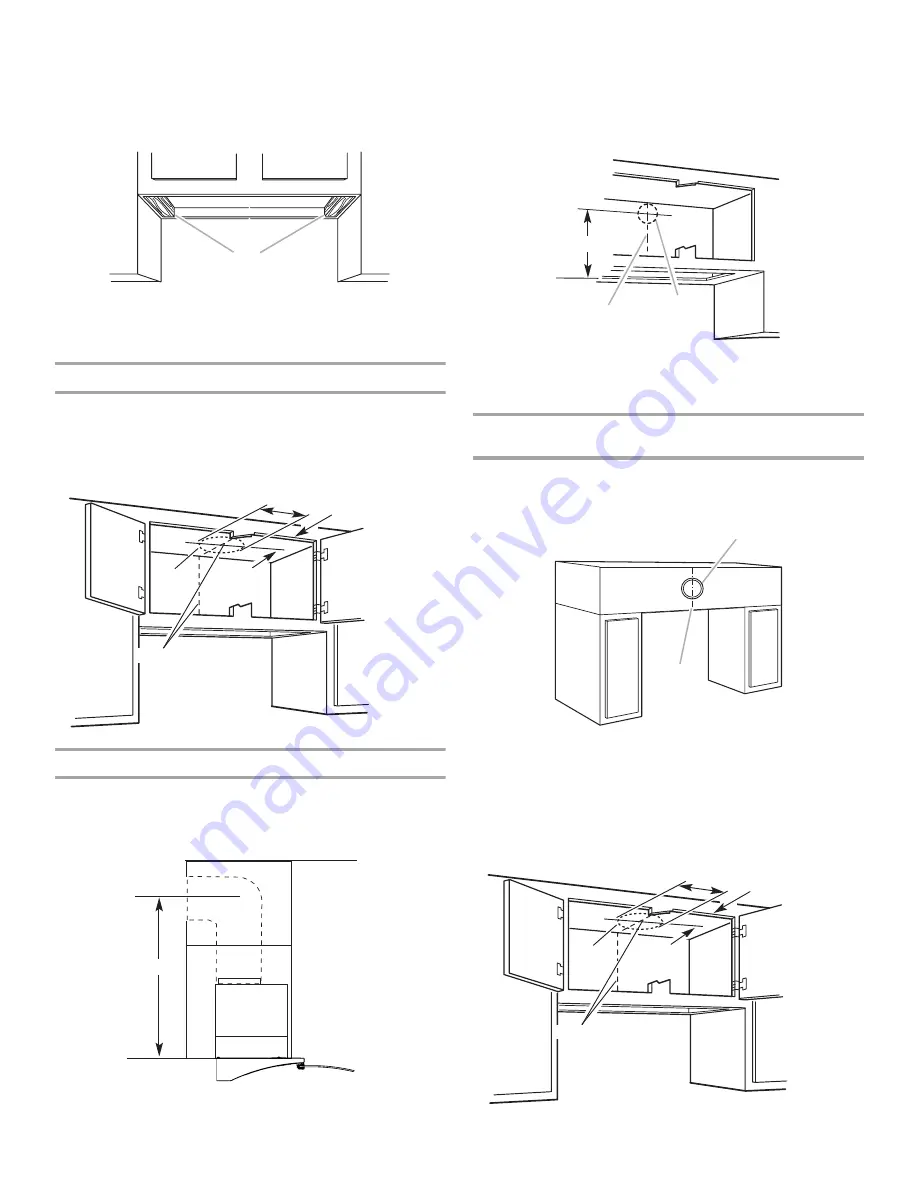
8
4. If the cabinet bottom is recessed above a support frame,
wood filler strips need to be installed on the right and left
sides of the cutout to provide sides of clearance for the
sliding screen. Wood filler strips should be flush with or
recessed
¹⁄₁₆
" (1.6 mm) to
¹⁄₈
" (3.2 mm) from the bottom of the
support frame.
5. Complete cabinet preparation following the instructions for
your type of installation.
Venting Outside Through the Roof
Measure and mark the lines as shown. Use a saber saw or
keyhole saw to cut a round opening through the top of the
cabinet and the roof for the vent.
Go to Step 6.
Venting Outside Through the Wall
Assemble the vent that you will use over the vent opening. Do
not attach the vent at this time. Measure from the top of the
screen housing to the horizontal centerline of the vent
opening (A). Remove the vent.
Transfer measurement A to the cabinet back wall. Measure
from the underside of the cabinet or wood filler strips, if used.
Mark the cutout as shown. Use a saber saw or keyhole saw
to cut a round opening through the back of the cabinet and
the exterior wall for the vent.
Go to Step 6.
Non-Vented (recirculating) Installation Through the
Soffit/Cabinet
Measure and mark a round vent opening in the soffit using
the method shown for venting through the wall. Measure and
mark the centerline on the soffit above the range hood area.
Measure and mark the lines as shown. Use a saber saw or
keyhole saw to cut a round opening for the vent.
The range hood can be vented inside through the top of the
cabinet.
A. Wood filler strips
A. Measurement A
A
Cutout
Centerline
(15.9 cm)
6¼
"
7³⁄₈
" (18.7 cm)
centerline to
cabinet front
A
A. Measurement A
B. Centerline
C. 6¼" (15.9 cm) round cutout
A. Vent cover
B. Centerline
B
A
C
B
A
Cutout
Centerline
(15.9 cm)
6¼
"
7³⁄₈
" (18.7 cm)
centerline to
cabinet front









































